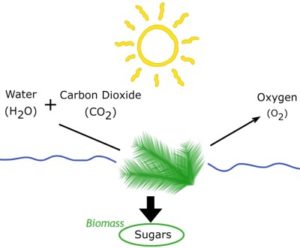Michael Moore released a film late April 2020 for free viewing on YouTube called Planet of the Humans. Essentially, the film, directed by Jeff Gibbs with Moore as executive producer, is a broadside against the destructive impact from human activities on the planet – not an uncommon theme anymore. In doing so, the Gibbs-Moore analysis points to culprits of overpopulation, over consumption, infinite economic growth, and industrial society itself, but surprisingly also takes to task renewable energy.
The claim by Gibbs-Moore that renewable energy, as well as some of it’s leading proponents, could be enabling ecological destruction is both intriguing and aggravating. Intriguing because to a limited extent it’s correct. Aggravating because they present so much misinformation trying to make their case – much of which is outdated material from 2012 Gibbs archives.

The common thread in all Moore films is that they’re “guaranteed to generate anger, debate, and, hopefully” knowledge. Although this film disappoints with its errors, the vast number of critical reviews are sure generating insights themselves. A really good review is from Tim Hjersted of Films For Action here in Lawrence KS, one of the founders of Sustainability Action Network – Films For Action’s Statement on Planet of the Humans. The FFA piece highlights many internal contradictions in the film, supported by salient embedded links. Hjersted elaborates with a key reference of – Powerdown: Let’s Talk About It – a concept that must be central to all solutions to ecocide. He says “No one ever mentions the other side of the Stop Coal equation: the powerdown. We have to start talking about what we are willing to give up. Powerdown means shifting to tools, techniques, lifestyle habits which use LESS power. It means reducing our energy consumption overall. Across the board. In totality”.
When Planet of the Humans attacks renewable energy, they argue that renewable technology is dependent on fossil fuels, therefore invalid. One major flaw with the Gibbs-Moore position is that they are fixated on large utility-scale renewables, and ignore village applications as well as forms of renewables other than just electricity. Another flaw is their condemnation of renewables because some fossil fuels were used to manufacture them. Gibbs-Moore are blind to the fact that a societal infrastructure made with a small percent of fossil fuels is far superior to one made entirely by fossil fuels. But if that greater energy efficiency is leveraged to expand human consumption and extend human resource extraction – granted, one the better points of the film – then it’s the economic growth that is the problem, not the use of renewable energy.
In a nutshell, it’s about frugality. Yes, there is a problem with the renewable energy industries. But the problem is not so much with the fact of the matter, as it is with the technocrats trying to maintain the highly consumptive industrial society lifestyle using renewables. It can’t be done, not to mention it’s ecologically suicidal.
Here’s an analogy. Solar advocates who pioneered the movement were very clear that, when designing a solar PV system, the first thing you do is reduce the level of electricity use. Eliminate as many electric applications as possible, and for what you absolutely need, use the most efficient ones. As such, you can minimize the size and output and materials of your solar array. Conservation comes first – frugality.
In contrast, corporate industrialists want to keep all the electric gizmos and consumptive lifestyle cranking full-bore, and supersize renewable infrastructure to match. Bigger is better, same as it always was. Gibbs-Moore rightly condemn big time “green energy” industrialists who are in it purely for the profit. However, different folks buy into the model of massive scale renewables for different reasons. Some for lack of understanding (watch misleading documentaries), some out of greed (sell more stuff – growth economy), some due to fear and loathing (won’t catch me with dirt under my fingernails), and some for sympathy and/or guilt (help the world’s poor get a better standard of living).

A riding lawn mower for every global citizen with accompanying high-energy lifestyle, theoretically powered by wind and solar electricity, is a powerful myth. But it’s physically, ecologically, and agriculturally impossible for the approximately 82% of humans in less developed countries to achieve the privileged lifestyle enjoyed by the roughly 18% of humans in industrialized societies (world total of 7.8 billion now). Institutionalizing renewable energy at such a gargantuan scale is what industrialists are trying to palm off to people who have well intentioned green living hopes.
It must be understood that corporate industrialists are not motivated by concerns to raise living standards or provide for sufficiency. They care only to maximize throughput (an Amory Lovins term), which maximizes their income. Throughput equals input (raw materials) made into stuff (flies off the shelf and breaks), and final output (trash). They don’t care who has money to buy, as long as someone does. The more people buying, or the more repeat purchases there are due to planned obsolescence, the faster the cycle goes. For them, renewable energy is just another means to drive consumption of more stuff. For those with a conservation ethic, renewable energy is a fundamental way to reduce consumption – a tool to help support soft ecological footprint lifestyles with small scale lights, pumps, motive power. It’s really a matter of intent.

And finally, it’s a mistake when discussing renewable energy to equate it only with electricity. The most cost efficient and energy efficient renewable energy device is a clothes line – think about it. Similarly, the most efficient solar collector isn’t PV or even solar hot water, but a pane of glass set into a heavily insulated box – with many variations on that theme, like solar oven, solar food dehydrator, bread box heater, or completely passive solar heated house. Renewable water pumping can be, and still is, done by simple windmills, or gravity run ram pumps. Low-head hydro generates electricity without damaging the stream ecology. Then there’s biogas from human or animal feces. The most efficient personal transportation means is the bicycle, running on carbohydrates, not hydrocarbons. And of course the absolutely most efficient renewable energy is photosynthesis – the transformation of CO2 and H2O into biomass powered by sunlight!

We guardedly encourage our readers to watch Planet of the Humans | by Michael Moore and Jeff Gibbs – YouTube. There are truths to be found in it, but all too often stated for all the wrong reasons. After watching that, there are several more enlightening documentaries at Films For Action – 20 Films to Watch After (or instead of) Planet of the Humans. Learn more at – Planet of the Humans Almost Gets the Real Problem, then Goes Full Ecofascism, and Why Planet of the Humans is crap.


Recent Comments